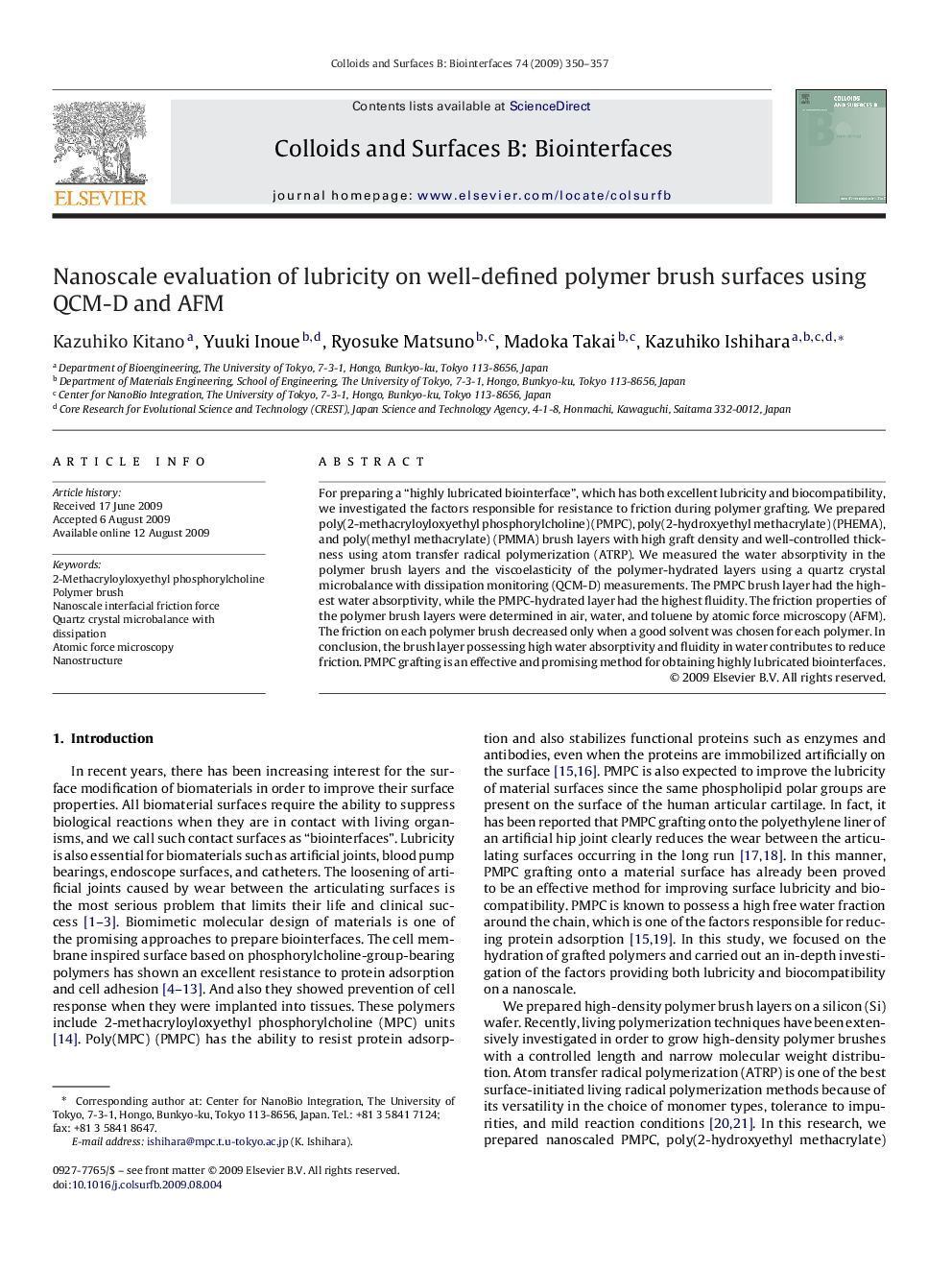| کد مقاله | کد نشریه | سال انتشار | مقاله انگلیسی | نسخه تمام متن |
|---|---|---|---|---|
| 601848 | 879955 | 2009 | 8 صفحه PDF | دانلود رایگان |

For preparing a “highly lubricated biointerface”, which has both excellent lubricity and biocompatibility, we investigated the factors responsible for resistance to friction during polymer grafting. We prepared poly(2-methacryloyloxyethyl phosphorylcholine) (PMPC), poly(2-hydroxyethyl methacrylate) (PHEMA), and poly(methyl methacrylate) (PMMA) brush layers with high graft density and well-controlled thickness using atom transfer radical polymerization (ATRP). We measured the water absorptivity in the polymer brush layers and the viscoelasticity of the polymer-hydrated layers using a quartz crystal microbalance with dissipation monitoring (QCM-D) measurements. The PMPC brush layer had the highest water absorptivity, while the PMPC-hydrated layer had the highest fluidity. The friction properties of the polymer brush layers were determined in air, water, and toluene by atomic force microscopy (AFM). The friction on each polymer brush decreased only when a good solvent was chosen for each polymer. In conclusion, the brush layer possessing high water absorptivity and fluidity in water contributes to reduce friction. PMPC grafting is an effective and promising method for obtaining highly lubricated biointerfaces.
Journal: Colloids and Surfaces B: Biointerfaces - Volume 74, Issue 1, 1 November 2009, Pages 350–357